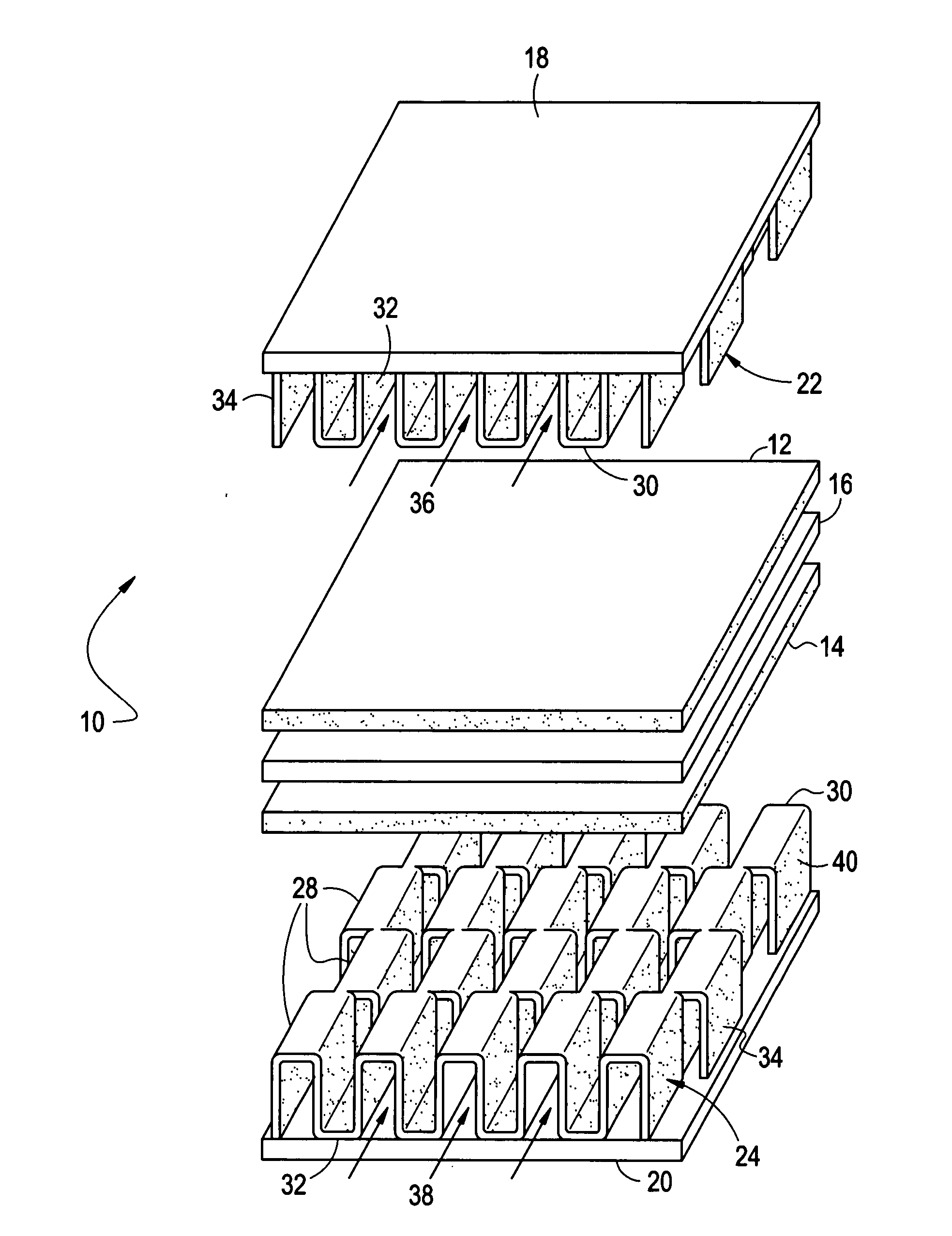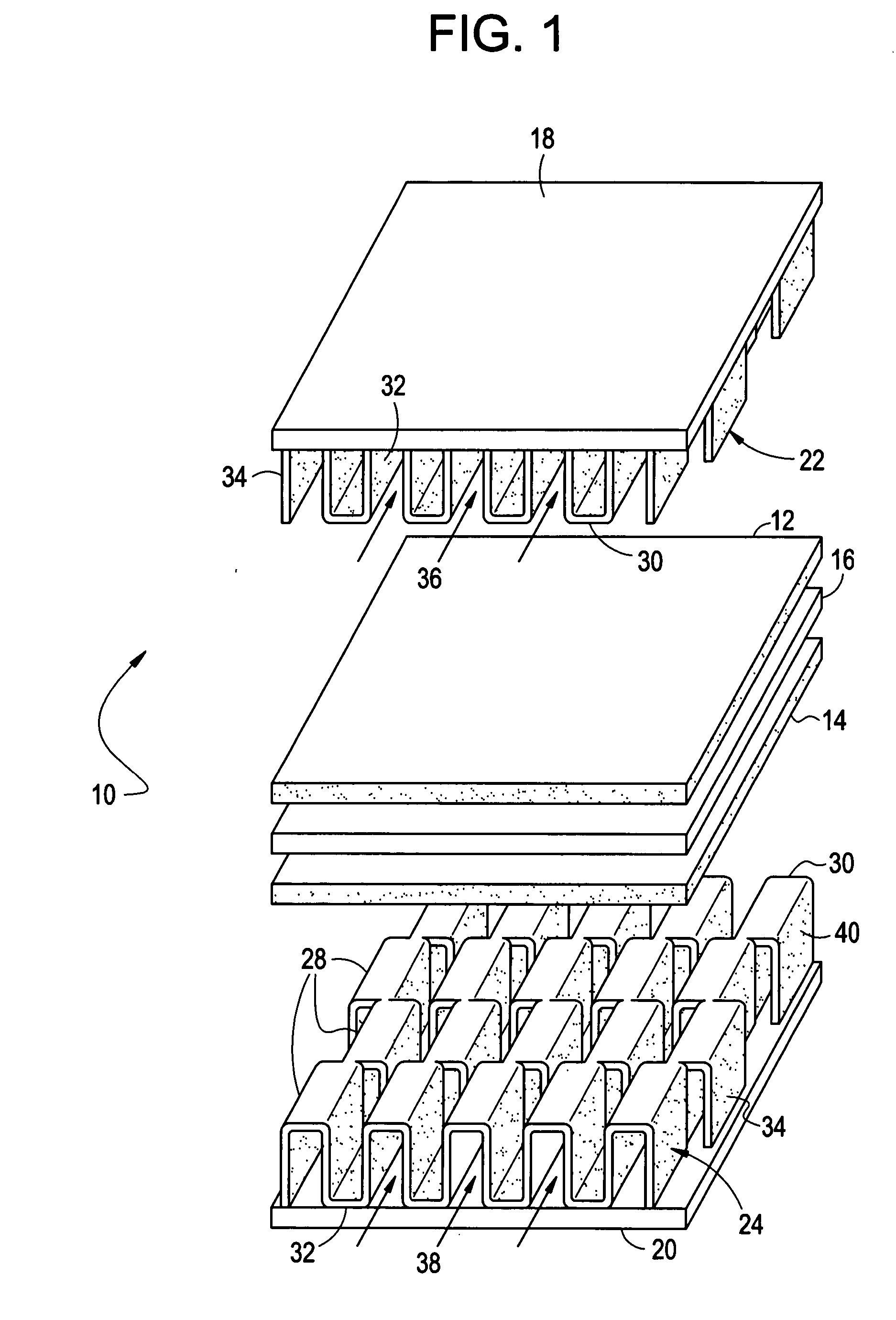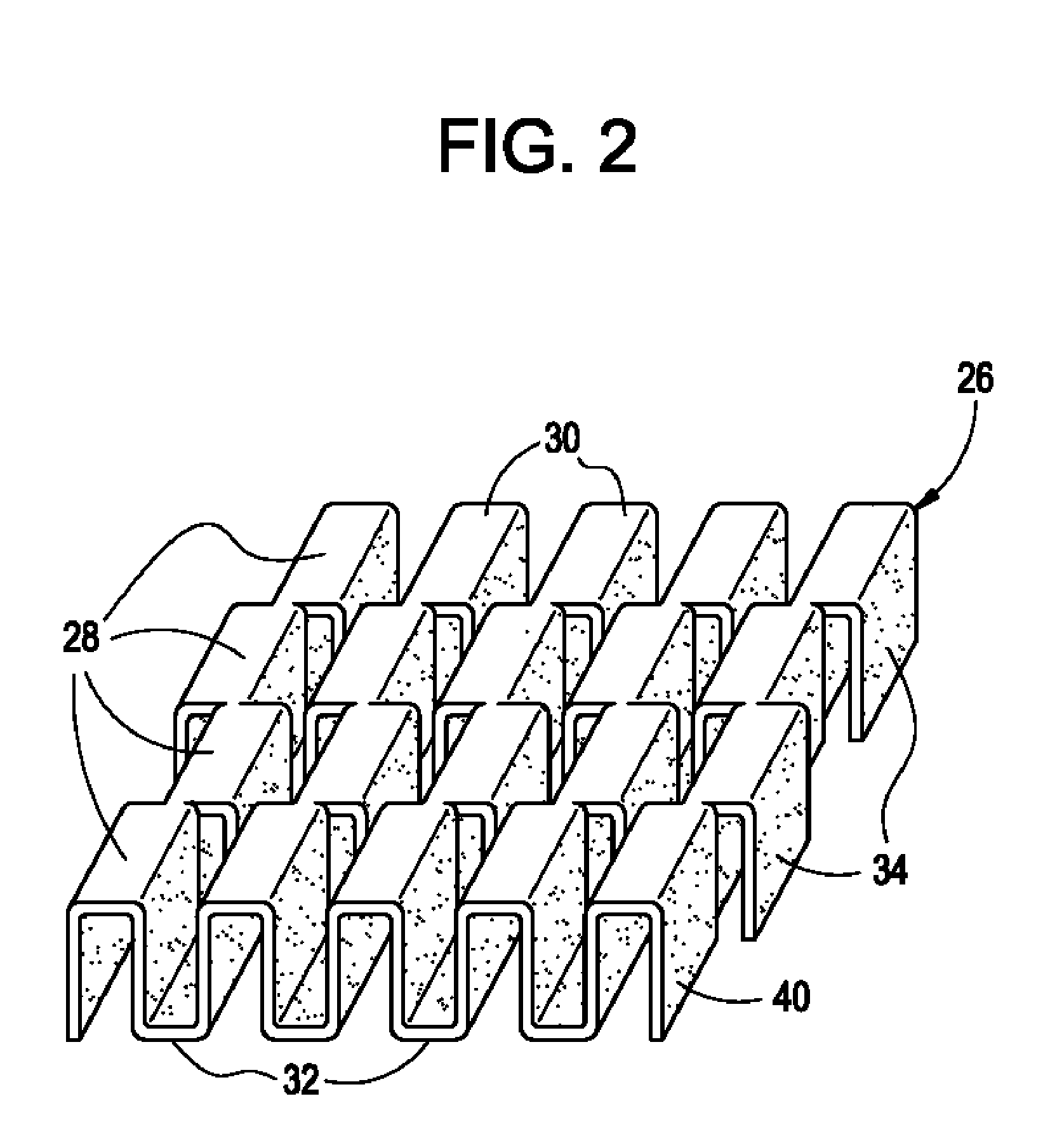Solid Oxide Fuel Cell With Internal Reforming, Catalyzed Interconnect For Use Therewith, and Methods
a fuel cell and internal reforming technology, applied in the direction of cell components, final product manufacturing, sustainable manufacturing/processing, etc., can solve the problems of increasing the volume, cost and operating complexity of the total sofc power generation system, consuming additional energy, and lack of catalytic surface area for sufficient reforming activity, etc., to achieve enhanced geometrical and catalytic surface area, the effect of reducing the carbonaceous deposi
- Summary
- Abstract
- Description
- Claims
- Application Information
AI Technical Summary
Benefits of technology
Problems solved by technology
Method used
Image
Examples
Embodiment Construction
[0020] As summarized above, this invention encompasses a catalyzed anodic interconnect, a solid oxide fuel cell with internal reforming including such a catalyzed anodic interconnect, a method for operating an SOFC, and a method for making a catalyzed anodic interconnect. Embodiments of this invention are described in detail below and illustrated in FIGS. 1-4.
[0021] A single SOFC cell 10 made in accordance with an embodiment of this invention is illustrated in FIG. 1 and has integrated internal reforming capability. Generally, the SOFC 10 comprises a cathode 12, an anode 14, solid electrolyte 16 disposed between the anode and the cathode, a cathodic current collector 18, an anodic current collector 20, a cathodic interconnect 22, and an anodic interconnect 24.
[0022] The cathode 12 is in the form of thin ceramic layer and is suitable for fuel cell operation. It is desirably made of lanthanum strontium manganite (LSM), lanthanum strontium ferrite (LSF), and cobaltites. The anode 14 ...
PUM
 Login to View More
Login to View More Abstract
Description
Claims
Application Information
 Login to View More
Login to View More - R&D
- Intellectual Property
- Life Sciences
- Materials
- Tech Scout
- Unparalleled Data Quality
- Higher Quality Content
- 60% Fewer Hallucinations
Browse by: Latest US Patents, China's latest patents, Technical Efficacy Thesaurus, Application Domain, Technology Topic, Popular Technical Reports.
© 2025 PatSnap. All rights reserved.Legal|Privacy policy|Modern Slavery Act Transparency Statement|Sitemap|About US| Contact US: help@patsnap.com



